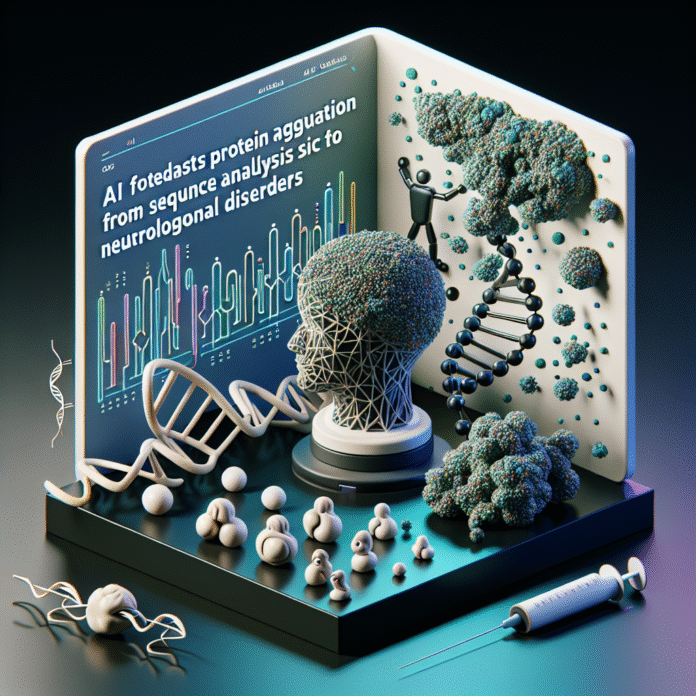AI Predicts Protein Aggregation from Sequence to Address Neurological Disease
Genetic Engineering and Biotechnology News
AI Predicts Protein Aggregation from Sequence to Address Neurological Disease
In a groundbreaking development, researchers are leveraging artificial intelligence (AI) to predict protein aggregation based on amino acid sequences, a crucial advancement in the fight against neurological diseases. Protein aggregation is a common feature of various neurodegenerative disorders, including Alzheimer’s and Parkinson’s diseases. Understanding how and why proteins aggregate can lead to more effective treatments and therapeutic interventions.
Recent studies have shown that misfolded proteins can clump together, forming aggregates that disrupt normal cellular functions. These aggregates are toxic to neurons and are a hallmark of many neurological conditions. The challenge has been to predict which proteins are likely to aggregate based solely on their sequences, a task that has proven complex due to the intricate nature of protein folding.
AI models, particularly deep learning algorithms, have demonstrated remarkable capabilities in pattern recognition and prediction. Researchers have trained these models on vast datasets of known protein structures and aggregation behaviors, allowing the AI to identify subtle sequence features that correlate with aggregation propensity. This innovative approach not only enhances our understanding of protein behavior but also accelerates the drug discovery process by pinpointing potential targets for new therapies.
Beyond predicting aggregation, the integration of AI in biotechnology presents opportunities for personalized medicine. By analyzing an individual’s genetic profile, AI can help determine susceptibility to certain neurological diseases and guide tailored treatment plans. This could revolutionize the way we approach diseases that currently have limited treatment options.
Moreover, the implications of this research extend beyond neuroscience. The ability to predict protein aggregation can impact fields such as biotechnology and pharmaceuticals, where protein stability is crucial for the development of biotherapeutics. As researchers continue to refine these AI models, the potential for innovative solutions to complex biological problems becomes increasingly promising.
In summary, the use of AI to predict protein aggregation marks a significant step forward in addressing neurological diseases. By unlocking the secrets of protein behavior, scientists are paving the way for new therapeutic strategies and enhancing our understanding of the molecular underpinnings of neurodegenerative disorders. As this technology evolves, it holds the potential to transform both research and clinical practices in the realm of human health.

